Navigating the delicate process of terminating an employee during their probation period can be challenging, yet it's essential for maintaining workplace standards. A well-crafted letter not only formalizes the decision but also ensures clarity and professionalism. By addressing concerns and the reasoning behind the termination, you can foster a respectful closure for both parties involved. If you want to learn how to formulate this letter effectively, keep reading for a detailed guide!
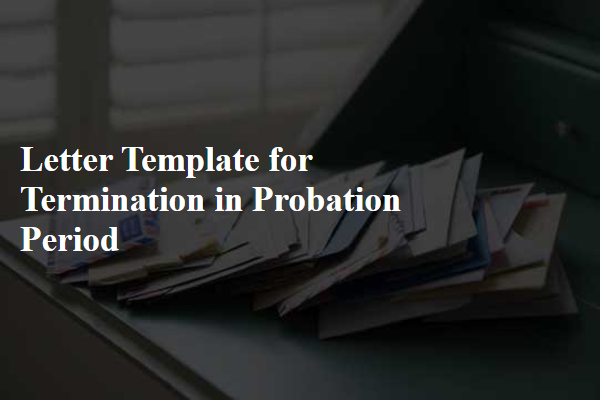
Clear reason for termination
During the probation period, an employee's suitability for the role is carefully evaluated based on performance, conduct, and adherence to company policies. After assessing the situation, it was determined that the individual's performance did not meet the established standards for the position. Frequent attendance issues were noted, with the employee missing five out of twenty working days within the first two months. Additionally, the employee struggled to meet specific project deadlines, with a notable delay on the XYZ Project, initially scheduled for completion on October 1, 2023. Furthermore, feedback from team members indicated difficulties in collaboration, undermining group synergy within the department. Consequently, the decision has been made to terminate the probationary employment to ensure the overall effectiveness of the team at [Company Name].
Employee's performance evaluation
Employee performance evaluation during the probation period can reveal critical insights about job fit and capability. Specific criteria, such as punctuality (arrivals within five minutes of schedule), communication skills (clarity in emails, team interactions), and task completion (meeting deadlines on projects) are often assessed. A structured review process typically involves gathering feedback from supervisors and peers, analyzing productivity metrics (output rates or sales numbers), and noting any behavioral concerns (attendance issues or teamwork dynamics). The documented evaluation usually results in recommendations or decisions regarding continued employment status, reflecting organizational standards and employee growth potential.
Reference to probation period terms
During the probation period established by company policy, typically lasting three to six months, employees are assessed based on performance, adaptability, and overall fit within the organization. Failure to meet the predefined performance benchmarks or demonstrate alignment with company values can lead to termination of employment. Notable criteria could include timely completion of assigned tasks, collaboration with team members, and adherence to company protocols. A formal termination notice should explicitly reference the terms outlined in the employee handbook, specifying the reasons for termination and the effective date, ensuring compliance with labor laws. This process ensures clarity and maintains professional standards during employment transitions.
Notice period details
During a probation period of employment, the termination process is guided by specific notice period details that may vary based on company policy and local labor regulations. Typically, a minimum notice period of one week (seven days) is required for either party to formally notify the other about the termination of employment, although some organizations may adhere to a two-week notice period. This notice period allows the employee to prepare for a transition and enables the employer to look for substitutes or redistribute work among remaining team members. Documenting the termination clearly and complying with any legal obligations is essential to avoid disputes and facilitate a smooth exit process.
Contact information for queries
During a probation period, employers often evaluate an employee's performance and fit within the organization. Termination during this phase can be due to various factors, such as skills mismatch or behavioral issues. If an employee has queries regarding their termination, they should be directed to the Human Resources (HR) department for clarification. Contact information for HR usually includes a dedicated phone number, email address, and sometimes a physical office location, ensuring that employees have access to support and information regarding their termination processes. It is crucial for employers to provide clear guidance and support following such decisions to maintain professionalism and respect.

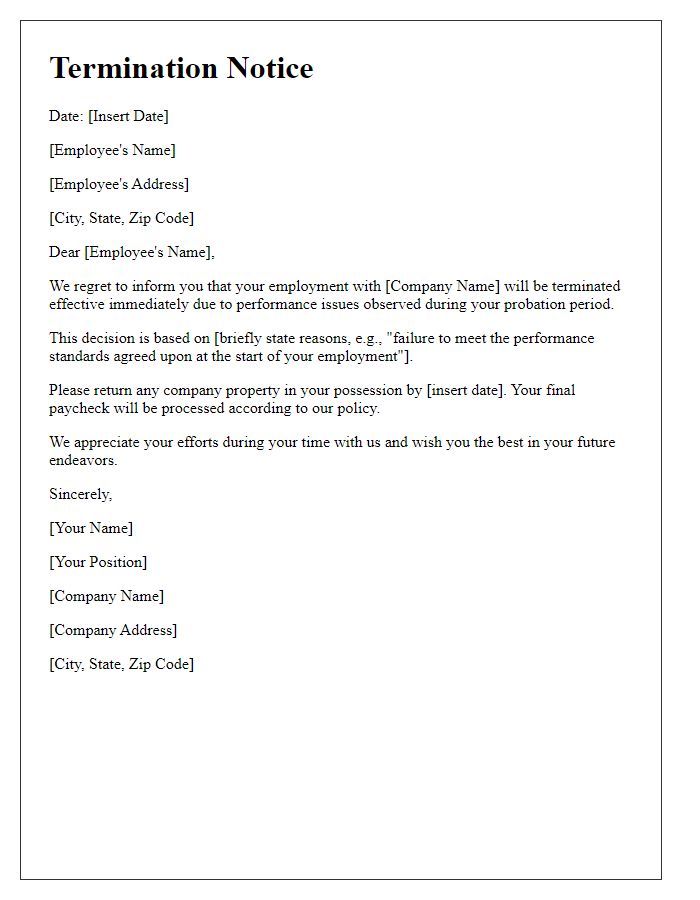
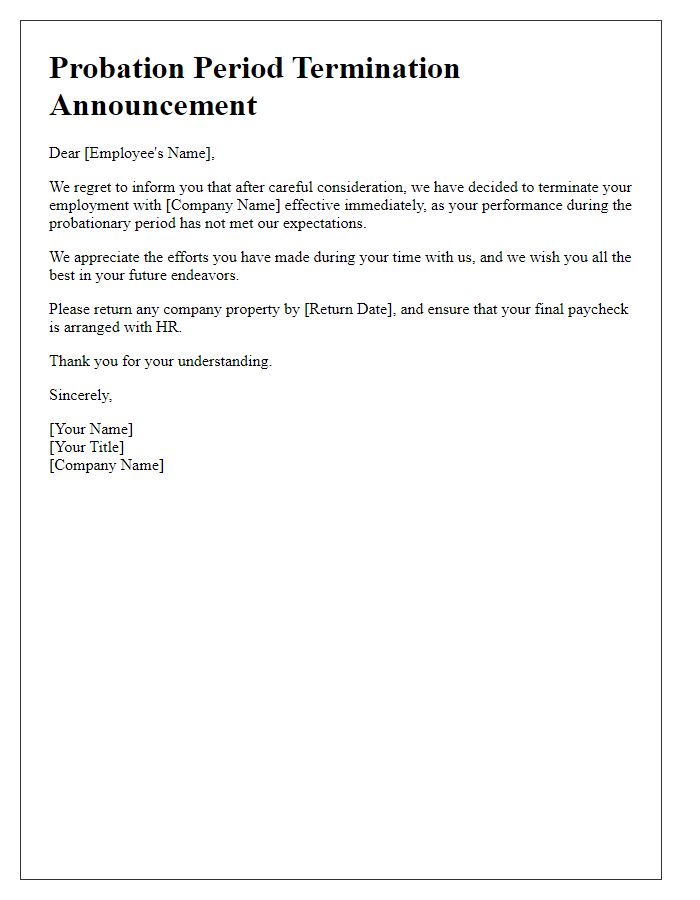
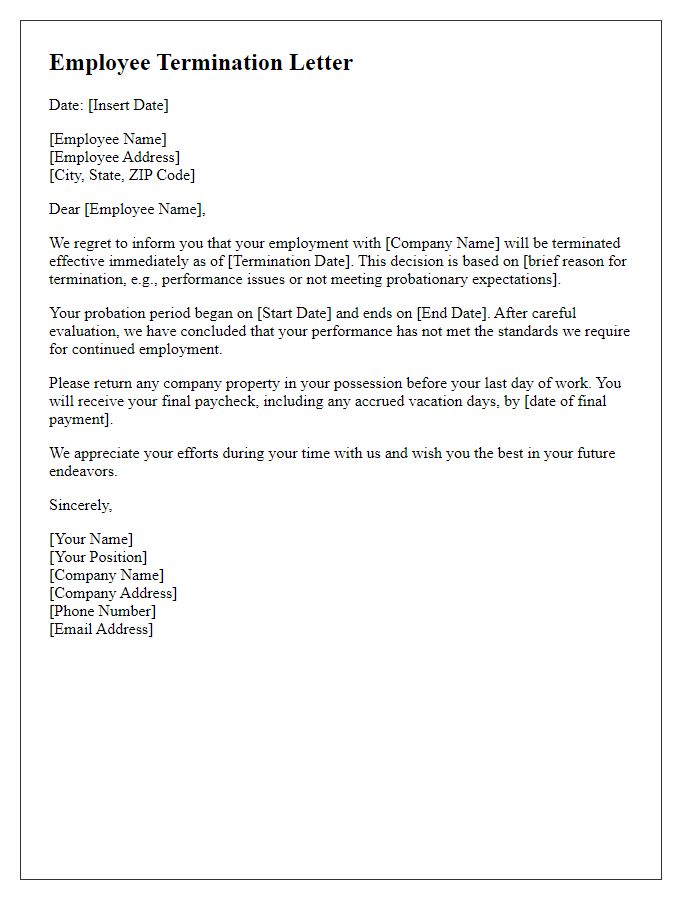
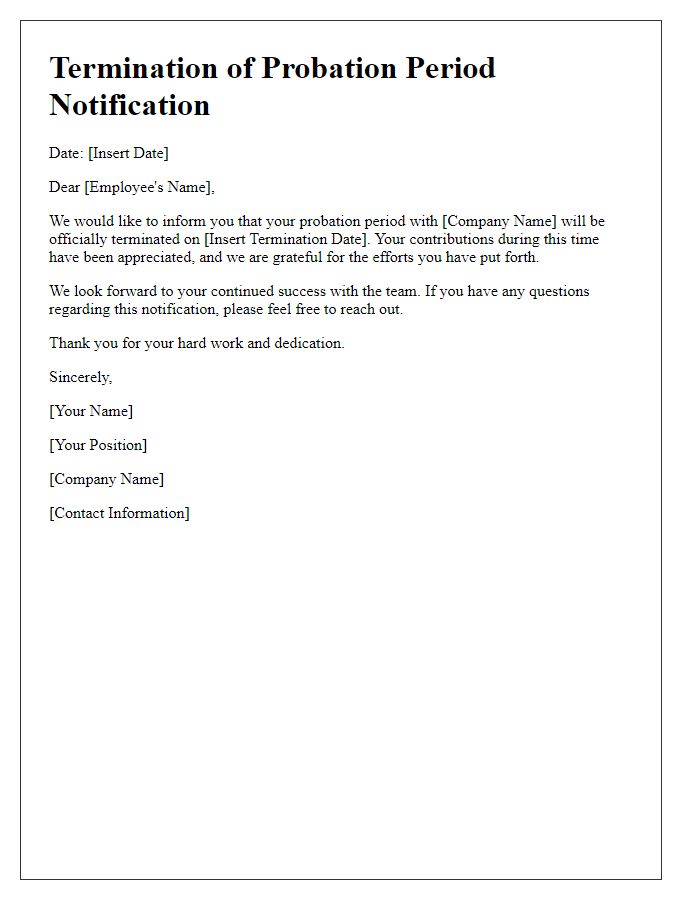
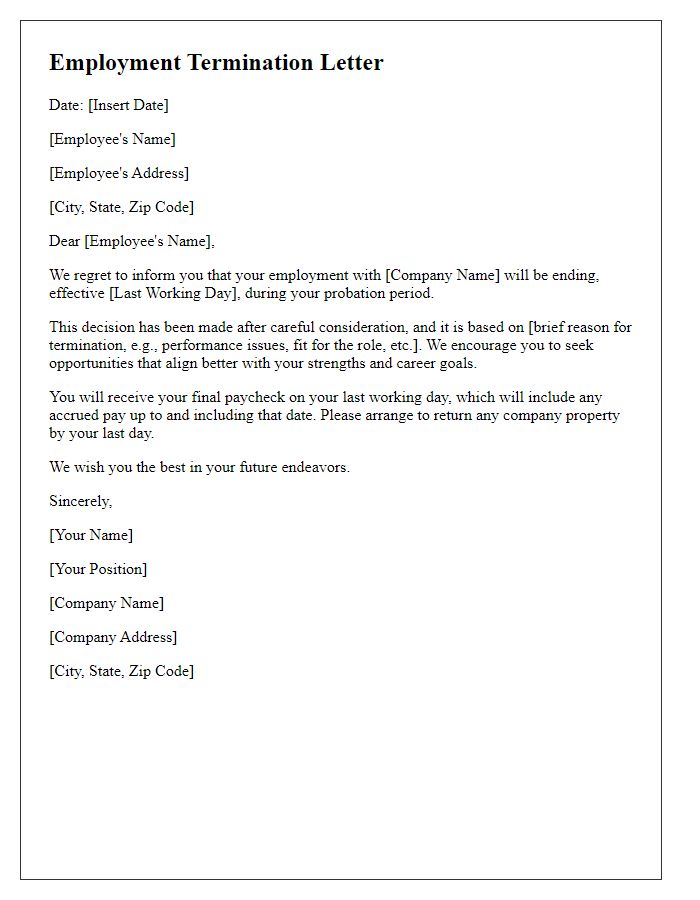
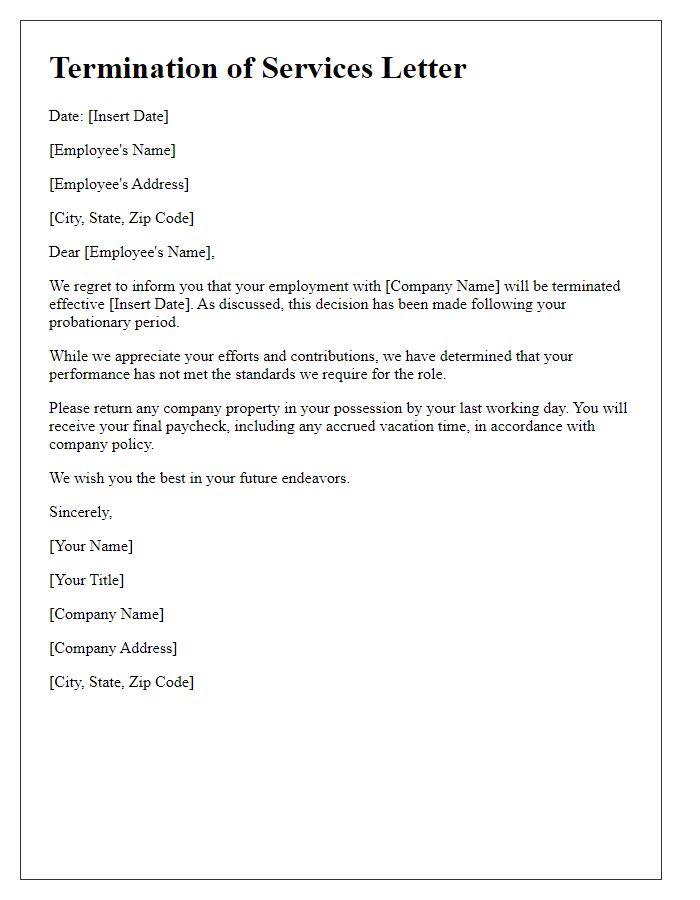
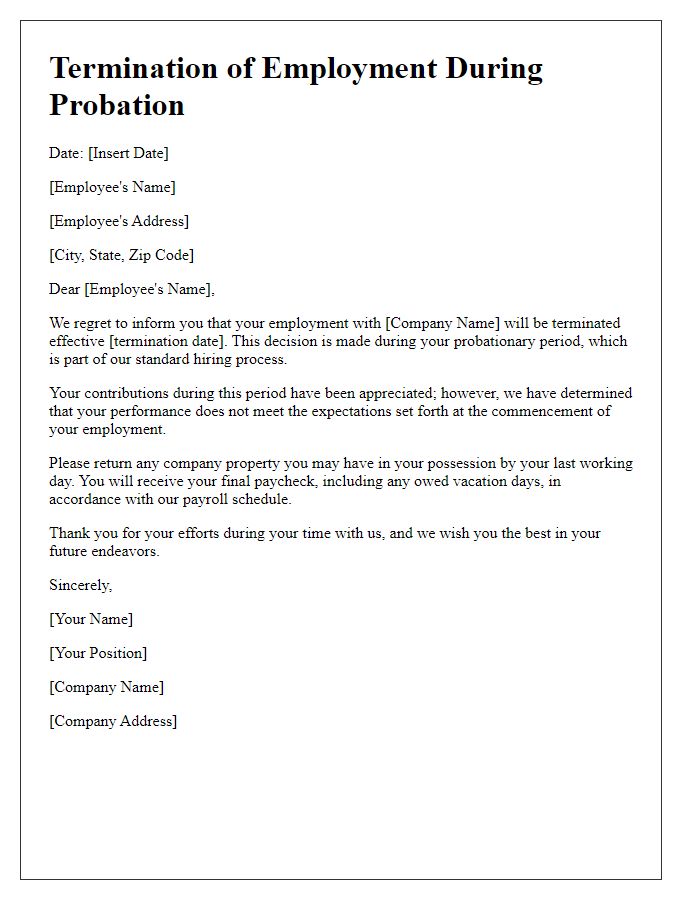

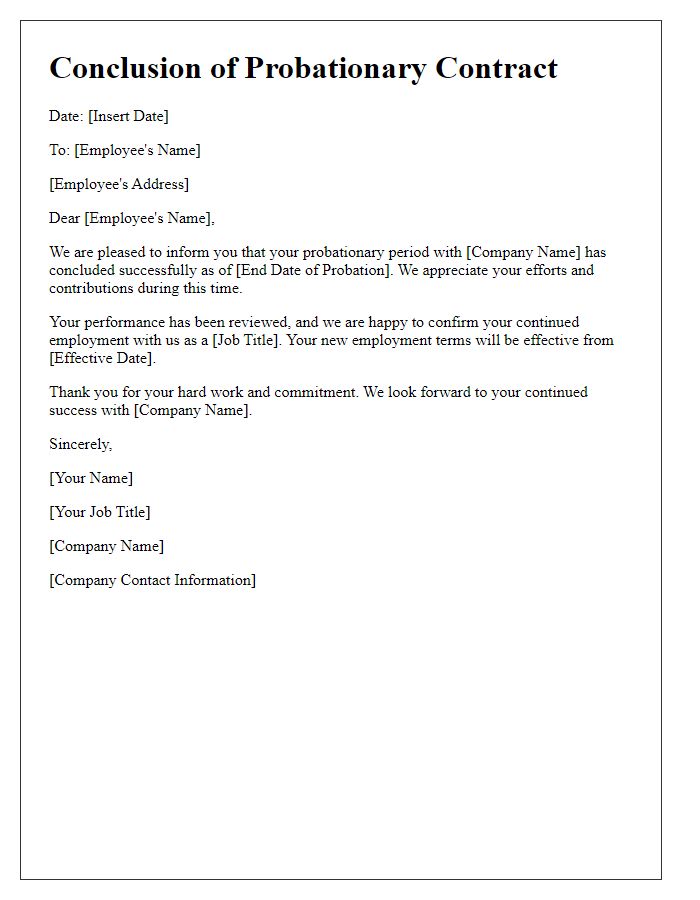
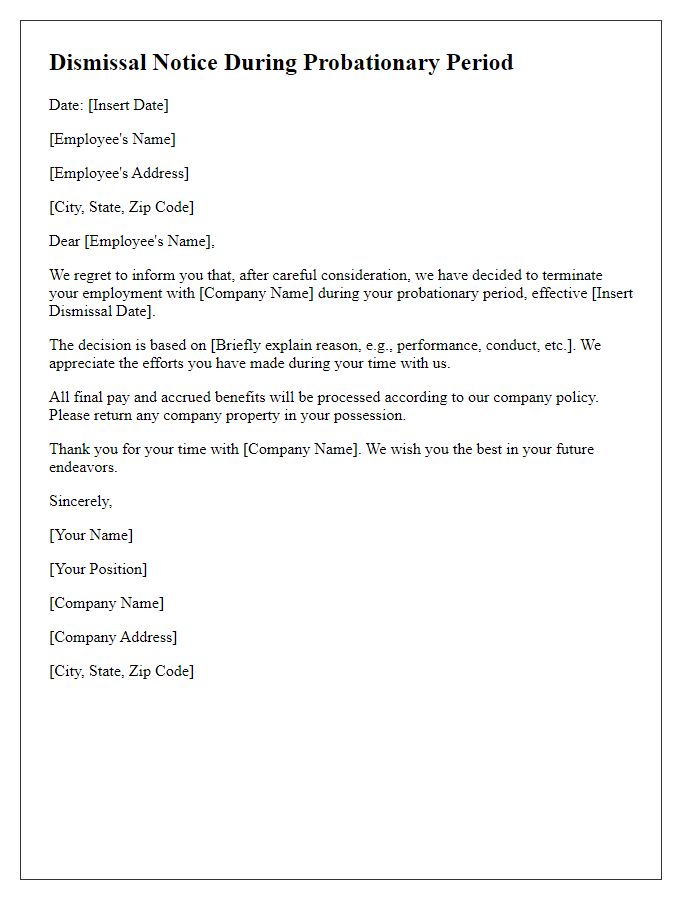


Comments